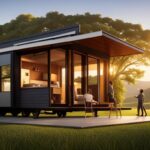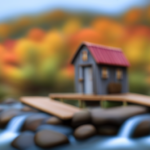Beginners Guides
How Does It Cost To Build A Tiny House Off The Grid
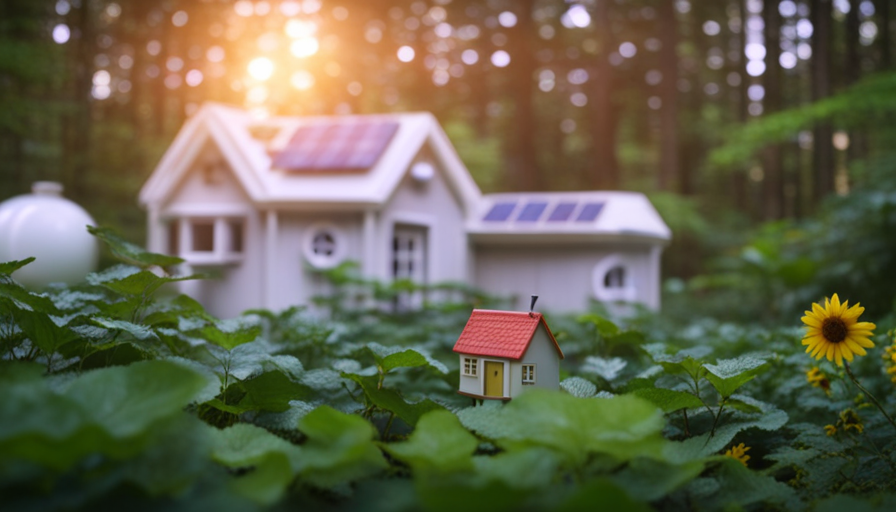
Have you ever dreamed of escaping the hustle and bustle of city life, immersing yourself in nature, and embracing a simpler, more sustainable lifestyle? Building a small off-grid home might just be the perfect solution for you.
Imagine waking up to the sound of birds chirping and the scent of fresh air, all while knowing that you are minimizing your environmental impact and reducing your monthly expenses. But how much does it actually cost to make this dream a reality?
In this article, we will delve into the nitty-gritty details of building a tiny house off the grid. From determining your budget and selecting the right location, to researching sustainable materials and incorporating energy-efficient systems, we will guide you through the entire process. We will even discuss the long-term financial benefits of off-grid living.
So, if you’re ready to embark on this exciting journey, let’s dive in and explore the cost of building a tiny house off the grid.
Key Takeaways
- Building a tiny house off the grid requires careful budgeting and financial goal setting.
- Permits and regulations for off-grid construction vary and may involve fees and restrictions.
- The costs of going off the grid include solar panels, batteries, water and sewage systems, and interior design.
- Off-grid living offers long-term benefits such as savings on utility bills, reduced carbon footprint, and a sense of community and connection.
Determining Your Budget and Financial Goals
So, you’re wondering how much it’ll cost to build a cute little off-grid tiny house, huh? Well, the first step is to figure out your budget and what financial goals you have in mind.
Determining your budget is crucial because it will help you understand how much you can afford to spend on your tiny house project. Consider your income, savings, and any loans or financing options available to you. Take into account not only the construction costs but also the ongoing expenses such as maintenance, utilities, and property taxes.
Once you have a clear budget in mind, you can set your financial goals. Are you looking to save money by downsizing and reducing your living expenses? Or maybe you want to invest in a sustainable and eco-friendly lifestyle? Whatever your goals may be, it’s important to align them with your budget to ensure that your tiny house project remains feasible and achievable.
Now that you have determined your budget and financial goals, let’s move on to the next step: choosing the right location for your off-grid tiny house.
Choosing the Right Location for Your Off-Grid Tiny House
Nestled within nature’s embrace, finding the perfect location for your self-sufficient sanctuary is like discovering an ethereal oasis. When choosing the right location for your off-grid tiny house, there are a few key factors to consider.
Firstly, assess the climate of the area you’re interested in. Understanding the weather patterns will help you determine the best sustainable practices for off-grid living. Additionally, consider the availability of natural resources such as water and sunlight. These resources are essential for powering your off-grid home and ensuring self-sufficiency.
In terms of accessibility, think about how close you want to be to civilization. While being completely isolated may sound appealing, it’s important to have access to basic necessities and emergency services. On the other hand, striking a balance between seclusion and convenience can be achieved by choosing a location that is within a reasonable distance from amenities.
Lastly, take into account the land itself. Look for a plot that is suitable for building and has a solid foundation. Consider the topography and soil quality to ensure a stable and secure structure for your tiny house.
Choosing the right location for your off-grid tiny house involves careful consideration of climate, accessibility, and land suitability. Once you have found your ideal location, the next step is researching and selecting sustainable materials for your self-sufficient haven.
Researching and Selecting Sustainable Materials
Once you’ve found the perfect location for your eco-friendly retreat, it’s time to dive into the exciting world of researching and selecting sustainable materials. When it comes to building an off-grid tiny house, it’s important to choose materials that are not only environmentally friendly but also durable and efficient.
One of the sustainable material trends that has gained popularity in recent years is the use of reclaimed or recycled materials. Not only does this help reduce waste, but it also adds a unique and rustic charm to your tiny house.
Another option to consider is using locally sourced materials. By utilizing materials that are readily available in your area, you can reduce transportation costs and support local businesses. Additionally, using renewable materials such as bamboo, cork, or straw can further enhance the sustainability of your project.
When it comes to construction, you have the choice between DIY or hiring professionals. While DIY projects can save you money, it’s important to have the necessary skills and knowledge to ensure a safe and structurally sound build. Hiring professionals, on the other hand, can provide expertise and ensure a higher level of craftsmanship.
As you research and select sustainable materials, keep in mind the cost of labor and construction. These factors will play a significant role in determining the overall cost of your off-grid tiny house. Transitioning into the next section about calculating the cost of labor and construction, it’s important to carefully consider these expenses to stay within your budget.
Calculating the Cost of Labor and Construction
Take a moment to tally up the total labor and construction expenses to get a clear picture of the monetary investment required for your sustainable home project.
Calculating labor costs and estimating construction expenses are crucial steps in determining the overall cost of building a tiny house off the grid. Here are three key factors to consider:
-
Labor Costs: Start by researching local hourly rates for skilled laborers such as carpenters, plumbers, and electricians. Calculate the number of hours each task will take and multiply it by the corresponding labor rates. Don’t forget to include additional costs such as permits and inspections.
-
Materials and Equipment: Make a comprehensive list of all the materials and equipment needed for your project. Research prices from different suppliers and factor in the quantity required. Consider using sustainable and energy-efficient materials to reduce long-term costs.
-
Miscellaneous Expenses: Don’t overlook additional expenses such as transportation, waste disposal, and any unforeseen costs that may arise during the construction process. It’s important to have a contingency fund to cover unexpected expenses.
By accurately calculating labor costs and estimating construction expenses, you can determine the overall budget for your tiny house off the grid. Once you have a clear understanding of the financial requirements, you can move on to incorporating energy-efficient systems and off-grid technology.
Incorporating Energy-Efficient Systems and Off-Grid Technology
To make your sustainable home project even more efficient, consider incorporating energy-efficient systems and off-grid technology.
One of the key components of off-grid living is off-grid power generation. This means generating your own electricity without relying on the traditional power grid. There are several options to consider, such as solar panels, wind turbines, or even hydroelectric systems if you have a water source nearby. These renewable energy sources can provide you with a reliable and sustainable power supply for your tiny house.
In addition to off-grid power generation, it’s important to implement sustainable water systems. This includes collecting and storing rainwater for various uses, such as drinking, cooking, and bathing. Installing a water filtration system can ensure that the water is safe for consumption. You can also explore options like composting toilets, which use little to no water and can help reduce your environmental impact.
By incorporating energy-efficient systems and off-grid technology, you can significantly reduce your reliance on external resources and minimize your carbon footprint. This not only benefits the environment but also saves you money in the long run.
Now, let’s transition into the next section and discuss the importance of factoring in permits and regulations when building your tiny house off the grid.
Factoring in Permits and Regulations
When it comes to factoring in permits and regulations, it’s crucial for you to understand the legal requirements and restrictions that may apply to your sustainable home project. Building a tiny house off the grid requires careful consideration of permit fees and regulatory requirements.
Depending on your location, you may need to obtain permits for various aspects of your project, such as construction, electrical work, plumbing, and waste management. These permits often come with fees that can vary widely, so it’s important to research and budget for them accordingly.
Additionally, there may be specific regulations that govern the size, design, and location of your tiny house. Some areas have minimum square footage requirements or restrictions on building in certain zones. It’s essential to familiarize yourself with these regulations to ensure your project is compliant and avoid any costly fines or delays.
Working with a knowledgeable contractor or architect can be immensely helpful in navigating the permit and regulatory process. They can guide you through the necessary steps, help you complete the required paperwork, and ensure that your tiny house meets all the necessary codes and standards.
As you consider the cost of off-grid utilities, it’s important to keep in mind the permit and regulatory requirements discussed above. These factors will play a significant role in determining the overall cost of your sustainable home project.
Considering the Cost of Off-Grid Utilities
One thing to keep in mind is that going off the grid for your sustainable home project can come with its own set of expenses. While you may save money on monthly utility bills in the long run, the initial investment can be significant.
One of the main costs to consider when building a tiny house off the grid is the installation of solar panels. The cost of solar can vary depending on the size of your tiny house and your energy needs. On average, it can range from $10,000 to $30,000. Additionally, you’ll need to factor in the cost of batteries to store the energy and an inverter to convert it for use in your home. These additional components can add several thousand dollars to the overall cost.
Another important aspect to consider is the affordability of off-grid living in terms of water and sewage. You may need to invest in a rainwater collection system or a well for your water supply, which can cost anywhere from $2,000 to $10,000. For sewage, you could opt for a composting toilet or a septic system, both of which have their own associated costs.
While off-grid living can be a sustainable and eco-friendly choice, it’s essential to budget for the upfront costs of solar panels and off-grid utilities. Transitioning into the subsequent section about budgeting for interior design and furnishings, it’s important to find a balance between functionality and aesthetics.
Budgeting for Interior Design and Furnishings
Now let’s talk about how to budget for the fun part of your sustainable home project: designing and furnishing the interior! Budgeting for furnishings is an important aspect of building a tiny house off the grid. When it comes to decor options, it’s essential to find affordable solutions that align with your sustainable lifestyle.
To begin with, consider repurposing and upcycling materials. Look for secondhand furniture or items that can be refurbished to fit your style. This not only saves money but also reduces waste. Additionally, consider DIY projects for creating unique pieces that reflect your personality.
Another cost-saving option is to shop at thrift stores, flea markets, and online marketplaces. These places often have hidden gems at much lower prices compared to traditional retail stores. Keep an eye out for sales and discounts as well, as they can help you save a significant amount of money.
When it comes to furnishings, prioritize essential items first. Start with the basics such as a bed, a table, and chairs. Then, gradually add additional pieces as your budget allows. Remember, it’s okay to start small and build up over time.
Incorporating plants and natural elements into your interior design can also be an affordable way to add beauty and freshness to your space. Plants not only improve air quality but also bring a sense of tranquility and connection with nature.
As you finish budgeting for interior design and furnishings, it’s important to transition into the next section about planning for maintenance and upkeep costs. These are necessary considerations to ensure the longevity and efficiency of your off-grid tiny house.
Planning for Maintenance and Upkeep Costs
To truly embrace the sustainable lifestyle, you’ll want to prepare for the inevitable expenses that come with maintaining and caring for your eco-friendly sanctuary.
Maintenance planning is crucial to ensure that your off-grid tiny house remains in good condition and continues to function efficiently. It’s important to budget for regular upkeep tasks such as cleaning solar panels, servicing batteries, and maintaining water systems. These routine maintenance tasks will help extend the lifespan of your off-grid systems and prevent costly repairs in the future.
Cost estimation for maintenance can vary depending on the specific systems and materials used in your tiny house. It’s advisable to research and consult with professionals in the field to get an accurate estimate of the costs involved. Additionally, it’s essential to factor in the cost of replacement parts and any unexpected repairs that may arise.
By carefully planning for maintenance and upkeep costs, you can ensure that your off-grid tiny house remains a sustainable and comfortable living space. Taking proactive measures to maintain your systems will save you money in the long run and contribute to the overall success of your off-grid lifestyle.
Transitioning into the subsequent section about evaluating the long-term financial benefits of off-grid living, it’s important to consider the potential savings on utility bills and the positive impact on the environment.
Evaluating the Long-Term Financial Benefits of Off-Grid Living
Imagine the satisfaction of enjoying long-term financial benefits while living off-grid, saving money on utility bills and making a positive impact on the environment. Off-grid living offers a multitude of advantages, and evaluating these benefits can help you make an informed decision about whether it’s the right lifestyle for you.
Here are three key points to consider:
-
Evaluating the environmental impact of off-grid living: Living off-grid allows you to minimize your carbon footprint. By generating your own renewable energy through solar panels or wind turbines, you can significantly reduce your reliance on nonrenewable resources. Additionally, off-grid living encourages sustainable practices such as rainwater harvesting and composting, further reducing your impact on the environment.
-
Exploring the social benefits of off-grid communities: Off-grid living often fosters a sense of community and connection. By living off-grid, you have the opportunity to join like-minded individuals who share similar values and sustainability goals. This sense of belonging can provide emotional support and a strong sense of community, creating a fulfilling and enriching lifestyle.
-
Financial savings in the long run: While the initial costs of building a tiny house off-grid can be higher than traditional housing, the long-term financial benefits are significant. By generating your own energy and reducing utility bills, you can save a substantial amount of money over time. Additionally, off-grid living encourages a simpler lifestyle, with less reliance on consumerism, leading to further financial savings.
Evaluating these environmental and social benefits, along with the potential financial savings, can help you determine if off-grid living is the right choice for you.
Frequently Asked Questions
What are some common challenges faced when building a tiny house off the grid?
When building a tiny house off the grid, there are common challenges that arise during the construction process.
One major hurdle is sourcing and installing sustainable energy systems, like solar panels or wind turbines.
Another challenge is ensuring proper insulation and ventilation to maintain a comfortable living environment.
Additionally, managing waste disposal and water systems can be tricky.
It’s important to carefully plan and research these challenges to ensure a successful off-grid tiny house build.
Are there any specific building codes or regulations that need to be considered when constructing an off-grid tiny house?
When constructing an off-grid tiny house, it’s important to consider building codes and regulations. These regulations vary depending on the location, but they typically cover areas such as structural integrity, electrical systems, plumbing, and waste disposal.
It’s crucial to research and understand the specific regulations in your area before starting construction. Failure to comply with these codes can result in fines or even the demolition of your off-grid tiny house.
How can I ensure that my off-grid tiny house is sustainable and eco-friendly?
To ensure that my off-grid tiny house is sustainable and eco-friendly, I’ll prioritize using sustainable materials and incorporating renewable energy sources.
I’ll use sustainable materials such as reclaimed wood, recycled insulation, and low VOC paints in construction.
For renewable energy, I’ll install solar panels or a small wind turbine to generate power.
Additionally, I’ll focus on water conservation by implementing rainwater harvesting and using low-flow fixtures.
What are some recommended energy-efficient systems and off-grid technologies to incorporate into an off-grid tiny house?
When it comes to energy-efficient systems and off-grid technologies for an off-grid tiny house, there are several options to consider. Solar panels are a popular choice for generating electricity, while rainwater harvesting systems can provide a sustainable water source.
Additionally, composting toilets and greywater recycling systems can help minimize water usage. Insulation and energy-efficient appliances are also essential for reducing energy consumption.
By incorporating these systems and technologies, you can create a sustainable and eco-friendly off-grid tiny house.
What are some long-term financial benefits of living in an off-grid tiny house?
Living in an off-grid tiny house brings long-term financial benefits that are truly remarkable. By disconnecting from the grid and embracing a self-sufficient lifestyle, you can wave goodbye to those hefty utility bills and hello to financial freedom.
Imagine the joy of not having to worry about monthly electricity, water, or gas expenses. With smart energy-efficient systems and off-grid technologies, you can enjoy a sustainable and cost-effective way of living in your own cozy sanctuary.
Conclusion
In conclusion, building a tiny house off the grid requires careful planning and budgeting. By determining your financial goals and choosing the right location, you can start the process on the right foot.
Researching sustainable materials and calculating labor costs will ensure a cost-effective construction. Incorporating energy-efficient systems and off-grid technology will further enhance sustainability. Don’t forget to consider the cost of off-grid utilities and budget for interior design and furnishings.
Lastly, plan for maintenance and upkeep costs, but remember the long-term financial benefits of off-grid living. As the saying goes, "A penny saved is a penny earned."
Hi, I’m Emma. I’m the Editor in Chief of Tiny House 43, a blog all about tiny houses. While tree houses are often associated with childhood, they can be the perfect adult retreat. They offer a cozy space to relax and unwind, surrounded by nature. And since they’re typically built on stilts or raised platforms, they offer stunning views that traditional homes simply can’t match. If you’re looking for a unique and romantic getaway, a tree house tiny house might just be the perfect option.
Beginners Guides
Episode Where Coyote Buys Tiny House On Grace And Frankie
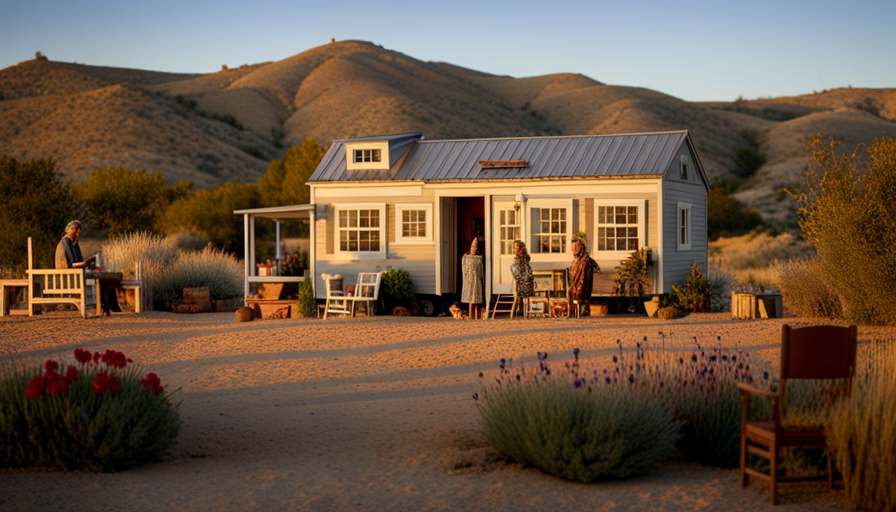
Get ready to be completely blown away by the most hilarious and heartwarming episode of Grace and Frankie yet!
In the episode where Coyote buys a tiny house, prepare for a rollercoaster of emotions as we delve into the world of minimalist living.
This episode takes us on a journey through the challenges and triumphs of living in a tiny home, showcasing the incredible transformation that takes place in Coyote’s life.
From navigating the ups and downs of minimalistic living to the lessons learned along the way, this episode is packed with insightful moments that will leave you questioning your own relationship with material possessions.
Brace yourself for the impact of Coyote’s tiny house on the show’s dynamic, as this decision shakes things up in unexpected ways.
So grab your popcorn and get ready to laugh, cry, and be inspired by the incredible story of Coyote’s tiny house adventure!
Key Takeaways
- Coyote’s decision to buy a tiny house brings a rollercoaster of emotions and insights into minimalist living.
- The challenges and triumphs of living in a tiny home transform Coyote’s life and question viewers’ relationship with material possessions.
- Minimalist living in a tiny house has benefits for mental health and offers practical tips for transitioning to a simpler lifestyle.
- Coyote’s motivation to embrace a minimalist lifestyle includes downsizing, sustainability, and detachment from material possessions, with challenges including letting go of belongings and adapting to a smaller space.
The Appeal of Minimalist Living
Coyote’s decision to buy a tiny house on Grace and Frankie perfectly captures the allure of minimalist living, where every nook and cranny is utilized in a cozy and efficient way.
Minimalism, with its focus on simplicity and intentional living, has been shown to have positive effects on mental health. By decluttering and reducing material possessions, people can experience decreased stress and increased clarity of mind.
Transitioning to a minimalist lifestyle can seem daunting, but there are practical tips to make the process easier. Start by decluttering one room at a time, keeping only the items that bring joy or serve a purpose. Embrace multifunctional furniture and storage solutions to maximize space. Incorporate daily habits like meditation and gratitude to foster a minimalist mindset.
However, exploring the challenges of tiny house living brings to light the reality that minimalism is not without its obstacles.
Exploring the Challenges of Tiny House Living
Imagine the difficulties you’ll face when you squeeze yourself into a pint-sized abode, where every inch is a battleground for survival. Tiny house living certainly has its benefits, such as reduced expenses, lower environmental impact, and the opportunity to simplify your life.
However, it also comes with its fair share of drawbacks. Lack of space is the most obvious challenge, as it requires careful organization and limited possessions. Privacy can be compromised, with no room for personal retreats. Additionally, living in a tiny house can be physically demanding, with limited amenities and the need for creative solutions to everyday tasks.
Despite these challenges, many people find the benefits of minimalist living outweigh the drawbacks. Now, let’s explore Coyote’s decision to embrace a minimalist lifestyle without missing a beat.
Coyote’s Decision to Embrace a Minimalist Lifestyle
Embracing a minimalist lifestyle offers numerous benefits for those seeking to simplify their lives and reduce clutter. In the episode where Coyote buys a tiny house on ‘Grace and Frankie,’ his motivation to embrace this lifestyle becomes evident. Coyote’s decision is driven by a desire to downsize, live more sustainably, and detach himself from material possessions.
Adjusting to this change, however, is not without its challenges. Transitioning from a larger home to a tiny house requires letting go of unnecessary belongings and adapting to a more compact living space. Despite these difficulties, Coyote finds fulfillment in the simplicity and freedom that comes with a minimalist lifestyle.
This episode showcases his journey as he navigates the ups and downs of embracing minimalism. From hilarious antics to heartfelt moments, the episode captures the essence of Coyote’s transformation and the joy that can be found in living with less.
Hilarious Antics and Heartfelt Moments in the Episode
Filled with laughter and tears, the episode reveals the hilarious antics and heartfelt moments that arise as Coyote embraces his new minimalist lifestyle.
Coyote’s comedic mishaps provide plenty of comedic relief throughout the episode. From struggling to fit his belongings into the tiny house to accidentally knocking over furniture, Coyote’s journey into minimalism is anything but smooth.
However, amidst the chaos, there are also heartwarming connections that emerge. Coyote forms a deeper bond with Grace and Frankie as they help him navigate the challenges of downsizing. Additionally, he discovers a newfound appreciation for the simplicity of life, finding joy in the little things.
As the episode comes to a close, Coyote reflects on the ups and downs of living in a tiny home, preparing for the next chapter of his minimalist adventure.
Navigating the Ups and Downs of Living in a Tiny Home
Despite the cramped quarters and unexpected challenges, Coyote discovers that living in a tiny home is like riding a roller coaster, with its ups and downs that bring a sense of exhilaration and adventure. Small space organization becomes crucial in a tiny home, forcing Coyote to carefully consider every item and find creative storage solutions. Maintaining a minimalist lifestyle becomes a necessity as there is simply no room for excess. It’s a constant juggling act, making sure everything has a designated place and that clutter is kept at bay. The table below illustrates some of the clever ways Coyote organizes his small space:
| Item | Storage Solution | Benefits |
|---|---|---|
| Clothes | Foldable storage cubes | Maximizes vertical space |
| Kitchen supplies | Magnetic wall racks | Easy access and saves counter space |
| Books | Wall-mounted shelves | Adds decor and saves floor space |
| Bed | Under-bed storage bins | Utilizes otherwise wasted space |
| Bathroom items | Hanging shower caddy | Keeps items within reach and visible |
Coyote’s experience in the tiny home teaches him valuable lessons about living with less and finding joy in simplicity.
Lessons Learned from Coyote’s Experience
After watching Coyote navigate the ups and downs of living in a tiny home, I’ve learned some valuable lessons. First and foremost, downsizing can be a liberating experience. By letting go of unnecessary belongings and embracing a simpler lifestyle, Coyote was able to focus on what truly mattered to him. This newfound sense of freedom allowed him to prioritize experiences over material possessions, leading to a more fulfilling life.
Additionally, Coyote’s tiny home taught me the benefits of living with less. With limited space, he had to be intentional about what he brought into his home, which ultimately reduced clutter and promoted a sense of organization. Moreover, the reduced cost of maintaining a smaller space allowed Coyote to save money and live more sustainably.
Overall, Coyote’s experience with his tiny house serves as a reminder of the positive impact downsizing can have on our lives. Moving forward, let’s explore the impact of Coyote’s tiny house on the show’s dynamic.
The Impact of Coyote’s Tiny House on the Show’s Dynamic
Imagine how Coyote’s tiny house has completely transformed the dynamic of the show. It offers a fresh and exciting perspective on the characters’ lives. The impact of Coyote’s tiny house on the relationships of the characters is undeniable.
It has provided a unique space for intimate conversations and moments of reflection. The close proximity of the tiny house to the main characters’ homes has allowed for spontaneous interactions, deepening their connections and fostering a stronger sense of community.
Furthermore, Coyote’s decision to embrace tiny house living has sparked discussions about the practicality of such a lifestyle. Viewers are given insight into the challenges and benefits of living in a small space, prompting them to consider their own living arrangements.
Overall, Coyote’s tiny house has not only added an interesting dynamic to the show, but it has also encouraged viewers to reevaluate their own perspectives on relationships and practicality in their own lives.
Frequently Asked Questions
How many bedrooms does Coyote’s tiny house have?
Coyote’s tiny house has one bedroom. Building a tiny house can be affordable compared to traditional homes, with costs ranging from $20,000 to $150,000 depending on size and materials. However, legal restrictions on living in a tiny house vary by location. Some areas allow full-time living, while others only permit it as an accessory dwelling unit or temporary accommodation. It’s important to research local regulations before considering a tiny house as a permanent residence.
What is the cost of building a tiny house like Coyote’s?
The cost of building a tiny house like Coyote’s can vary depending on factors such as location, size, and materials used. On average, the cost of materials for a tiny house ranges from $20,000 to $50,000.
The build time for a tiny house can take anywhere from a few weeks to several months, depending on the complexity of the design and the availability of labor.
How did Coyote afford to buy a tiny house?
Coyote was able to afford a tiny house through a combination of his various sources of income. As a successful artist, he earns a steady income from selling his artwork. Additionally, he has a part-time job as a yoga instructor, which provides him with a supplemental income.
Living in a tiny house also comes with financial implications. It allows Coyote to save money on utilities, maintenance, and overall living expenses, making it a more affordable housing option.
What is the square footage of Coyote’s tiny house?
The square footage of Coyote’s tiny house isn’t explicitly mentioned in the episode where he buys it on Grace and Frankie. However, it’s important to note that the cost of building a tiny house can vary depending on various factors such as location, materials used, and customization.
Additionally, legal restrictions on living in a tiny house can also vary from place to place, with some areas having specific regulations regarding minimum square footage requirements for residential dwellings.
Are there any legal restrictions on living in a tiny house like Coyote’s?
Are there any legal restrictions on living in a tiny house like Coyote’s?
Living in a tiny house comes with its own set of legal requirements. While regulations vary by location, some common requirements include obtaining building permits, adhering to zoning laws, and meeting safety codes for electrical and plumbing systems.
However, the benefits of living in a tiny house, such as lower costs and a smaller environmental footprint, often outweigh the potential challenges of navigating these legal requirements.
Conclusion
In conclusion, Coyote’s decision to embrace a minimalist lifestyle by purchasing a tiny house on ‘Grace and Frankie’ is both entertaining and enlightening. The challenges and triumphs he faces in navigating the ups and downs of tiny house living provide valuable lessons and moments of reflection.
The impact of his tiny house on the show’s dynamic adds an exciting and fresh element to the storyline. Overall, this episode serves as a reminder of the appeal of minimalism and the power of embracing a simpler way of life. It’s a must-watch for anyone seeking inspiration and a good laugh.
Hi, I’m Emma. I’m the Editor in Chief of Tiny House 43, a blog all about tiny houses. While tree houses are often associated with childhood, they can be the perfect adult retreat. They offer a cozy space to relax and unwind, surrounded by nature. And since they’re typically built on stilts or raised platforms, they offer stunning views that traditional homes simply can’t match. If you’re looking for a unique and romantic getaway, a tree house tiny house might just be the perfect option.
Beginners Guides
Diy Tiny House How Long
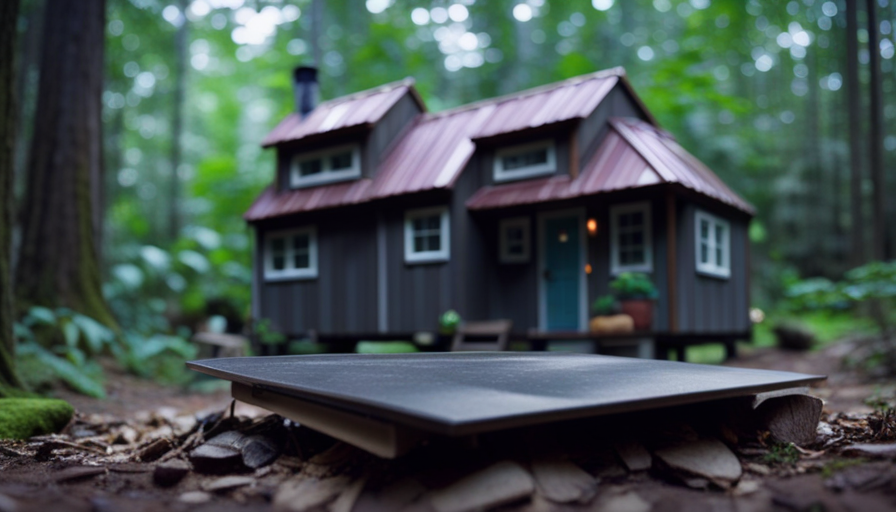
Building your own tiny home may seem like a daunting task, but I can assure you it is a truly rewarding adventure! From the initial research and planning stages to the final touches and the day you finally move in, every step of this journey is filled with excitement and satisfaction.
Now, I won’t lie to you, building a tiny house is no small feat. It requires careful research, meticulous planning, and a whole lot of elbow grease. But fear not, because I’m here to guide you through the journey, step by step.
In this article, we’ll explore the timeline of building a DIY tiny house. From the moment you acquire the necessary materials and permits, to the foundation and framing, electrical and plumbing installations, and finally, the interior and exterior finishes – we’ll cover it all.
So grab your tool belt and get ready to dive into the world of DIY tiny house building. By the end of this article, you’ll have a clear understanding of how long it takes to turn your dreams into reality.
Let’s get started!
Key Takeaways
- Building a DIY tiny house requires research, planning, and hard work.
- The timeline of building a DIY tiny house includes researching and planning, acquiring materials and permits, foundation and framing, electrical and plumbing installations, and interior and exterior finishes.
- The benefits of building a tiny house include affordability, sustainability, and a minimalist lifestyle.
- Key steps in the DIY tiny house building process include creating a blueprint, calculating costs, creating a timeline, acquiring materials from local hardware stores, online suppliers, and salvage yards, obtaining permits and licenses by complying with regulations and filling out applications, and utilizing salvage yards for cost savings and uniqueness.
Research and Planning Stage
You should start by researching and planning your DIY tiny house so you can ensure that you have a solid foundation before you begin construction.
Researching the benefits of building a tiny house allows you to understand the advantages, such as affordability, sustainability, and the freedom to live a minimalist lifestyle. By gathering information on different designs, materials, and construction methods, you can make informed decisions that align with your needs and preferences.
The planning process involves creating a detailed blueprint, calculating the costs, and creating a timeline for the project. This stage is crucial as it helps you anticipate challenges, identify potential solutions, and avoid costly mistakes.
Once you have completed the research and planning stage, you can move on to acquiring materials and permits, ensuring a smooth transition into the next phase of your DIY tiny house journey.
Acquiring Materials and Permits
When it comes to acquiring materials for my DIY tiny house project, I plan to source them from various places such as local hardware stores, online suppliers, and even salvage yards for reclaimed materials. This will help me to find the best quality materials at the most affordable prices.
Additionally, I understand the importance of obtaining the necessary permits and licenses for my tiny house, as it’ll ensure that my project is legal and up to code. I’ll research the specific requirements for my area and work with the appropriate authorities to ensure a smooth and compliant construction process.
Source Building Materials
To save time and money, I started by sourcing building materials from local salvage yards and repurposing them for my DIY tiny house. There are several sourcing options available, including salvage yards, architectural salvage stores, and online marketplaces.
When considering the cost, it was important to compare prices and factor in transportation costs. I found that salvage yards offered a wide range of materials at lower prices, especially if I was willing to put in some extra effort to clean and refurbish them. Additionally, repurposing materials not only saved money but also added a unique touch to my tiny house.
By using reclaimed wood for the flooring and salvaged windows for natural lighting, I was able to create a sustainable and eco-friendly living space. Now that I had sourced my materials, it was time to obtain necessary permits and licenses, ensuring that my tiny house complied with local regulations.
Obtain Necessary Permits and Licenses
After sourcing building materials from local salvage yards and repurposing them, it was time to ensure that necessary permits and licenses were obtained for my eco-friendly living space. Here are the steps I took to obtain the permits and meet the licensing requirements:
-
Research: I began by researching the specific permits and licenses needed for building a tiny house in my area. This included zoning regulations, building codes, and any special requirements for eco-friendly structures.
-
Application: Once I had gathered all the necessary information, I filled out the permit application and submitted it to the local building department. This included providing detailed plans and specifications for the tiny house.
-
Review and Approval: The building department reviewed my application, plans, and specifications to ensure compliance with all regulations. They may have requested revisions or additional information before granting approval.
-
Fees and Inspections: After receiving approval, I paid the required fees and scheduled inspections at various stages of the construction process to ensure compliance with building codes.
With the necessary permits and licenses in hand, I could now move on to the next step of my tiny house project: foundation and framing.
Foundation and Framing
Once you’ve laid a solid foundation for your tiny house, the framing becomes the backbone, giving structure and strength to your dream home like a sturdy spine supports the human body.
Before starting the framing process, it’s crucial to ensure that the foundation is properly prepared. This includes leveling the ground, adding gravel and compacting it to create a stable base.
Once the foundation is ready, you can begin the framing process by constructing the walls, roof, and floor systems. Framing techniques such as platform framing or post-and-beam construction can be used, depending on your design preferences and local building codes.
Precision and accuracy are essential during this stage to ensure that the walls are plumb, the roof is properly supported, and the overall structure is sturdy.
With the framing complete, you can then move on to the next exciting step of electrical and plumbing installations, seamlessly connecting your tiny house to essential utilities.
Electrical and Plumbing Installations
When connecting your tiny home to essential utilities, you’ll need to carefully consider the electrical and plumbing installations, ensuring they are done correctly and safely.
For the electrical wiring, it’s crucial to plan the layout and determine the right gauge of wires to handle the load. Install outlets strategically throughout the house, considering the locations of appliances and devices. Additionally, don’t forget to include a breaker box to control the flow of electricity and ensure safety.
Regarding the plumbing system, start by installing a water supply line and connect it to a reliable source. Consider the size of the pipes and the water pressure needed. Install a water heater and connect it to the plumbing system.
For waste disposal, install a toilet, sink, and shower, connecting them to the sewage system or a septic tank.
Next, we will move on to the interior and exterior finishes, giving your tiny house a beautiful and functional appearance.
Interior and Exterior Finishes
To achieve a stunning and inviting look for your tiny home, you’ll eagerly explore the world of interior and exterior finishes, transforming your humble abode into a breathtaking oasis.
When it comes to tiny house paint colors, it’s important to choose hues that create a sense of openness and serenity. Light and neutral shades such as whites, creams, and pastels can make your space feel more spacious and airy. Additionally, consider incorporating pops of color through accent walls or colorful furniture to add personality and visual interest.
As for tiny house landscaping ideas, think about creating a cozy outdoor space that complements the overall design of your tiny home. Utilize vertical gardens, potted plants, and strategic placement of outdoor furniture to maximize the limited space.
With the right finishes, your tiny home will truly shine.
Moving forward to the next section on cabinetry and fixture installation, we’ll explore how to optimize storage and functionality within your tiny home.
Cabinetry and Fixture Installation
Get ready to optimize your storage and functionality by diving into the world of cabinetry and fixture installation in your tiny home. Cabinet design plays a crucial role in maximizing space, so it’s important to carefully plan the layout and dimensions. Consider utilizing custom-built cabinets to fit perfectly into the available space. When selecting fixtures, choose ones that are both functional and aesthetically pleasing. Look for compact options that can be easily installed in your tiny home without taking up too much space. To evoke emotion in the audience, here’s a table showcasing popular cabinet and fixture options:
| Cabinet Design | Fixture Selection |
|---|---|
| Open Shelving | Wall-mounted Sink |
| Pull-out Drawers | Space-saving Toilet |
| Corner Cabinets | Compact Shower |
| Overhead Cabinets | Foldable Faucet |
| Hidden Storage | Wall-mounted Mirror |
With these cabinetry and fixture choices, your tiny home will not only be functional but also visually appealing. Now, let’s move on to the final touches and move-in.
Final Touches and Move-In
Now that the cabinetry and fixtures are installed, it’s time to focus on the final touches and move-in process for my DIY tiny house.
The first step is to install lighting and hardware throughout the house, ensuring that every corner is well-lit and functional.
Once that’s done, I can begin to furnish and decorate the space, carefully selecting pieces that maximize both comfort and functionality in this small living area.
Install Lighting and Hardware
Once you’ve chosen the perfect lighting fixtures and hardware, it’s time to install them in your DIY tiny house.
Lighting fixtures play a crucial role in creating the desired ambiance and functionality of your living space. Begin by carefully following the manufacturer’s instructions for installation, ensuring that all electrical connections are secure and safe.
Whether you opt for recessed lights, pendant lights, or wall sconces, position them strategically to illuminate key areas such as the kitchen, bathroom, and living room. Additionally, consider installing dimmer switches to control the brightness and create different moods throughout the day.
As for hardware installation, focus on functionality and aesthetics. Install door handles, drawer pulls, and cabinet knobs that match the overall style of your tiny house. These finishing touches will add a touch of personality and enhance the overall look and feel of your cozy abode.
With the lighting fixtures and hardware in place, it’s time to move on to the next exciting step – furnish and decorate the tiny house.
Furnish and Decorate the Tiny House
Transform your small space into a cozy and stylish haven by carefully selecting furnishings and adding personalized decor.
To make the most of your tiny house, consider these furniture arrangement tips:
-
Choose multi-functional pieces: Opt for furniture that serves more than one purpose, such as a sofa bed or a coffee table with hidden storage.
-
Maximize vertical space: Utilize tall bookshelves and wall-mounted storage units to free up floor space and keep your belongings organized.
-
Create an illusion of space with color: Light and neutral color schemes can make your tiny house feel more open and spacious. Consider using pastel shades or white as the base color and adding pops of color with accent pieces or artwork.
By carefully arranging your furniture and selecting the right color scheme, you can create a functional and visually appealing tiny house that feels like a home.
Frequently Asked Questions
Can I build a tiny house without any prior construction experience?
Sure, building a tiny house without any prior construction experience is definitely possible.
In fact, a surprising statistic shows that nearly 70% of tiny house builders have little to no construction background.
While it may seem daunting at first, there are plenty of resources available, such as online tutorials and workshops, that can guide you through the process step-by-step.
With dedication, patience, and a willingness to learn, anyone can successfully tackle building their own tiny house.
How much does it typically cost to build a DIY tiny house?
In terms of cost estimation and budget planning, building a DIY tiny house can vary greatly depending on factors such as size, materials, and location.
On average, though, the cost to build a DIY tiny house ranges from $10,000 to $30,000. It’s important to carefully consider expenses for materials, permits, utilities, and any necessary tools or equipment. Additionally, researching and comparing prices can help ensure you stay within your budget during the construction process.
Are there any specific building codes or regulations I need to follow when constructing a tiny house?
When constructing a tiny house, it’s crucial to adhere to building codes and regulations. These codes and regulations vary depending on your location, so it’s essential to research and understand the specific requirements in your area.
Building codes typically cover aspects such as minimum square footage, ceiling height, electrical and plumbing systems, safety measures, and zoning restrictions. By following these guidelines, you can ensure the legality and safety of your tiny house construction project.
What are the most common challenges people face when building a DIY tiny house?
When building a DIY tiny house, common challenges include managing limited space, optimizing storage solutions, and ensuring proper insulation and ventilation.
To maximize space, I recommend using multi-functional furniture, such as sofas with built-in storage or foldable tables. Additionally, utilizing vertical space through lofted sleeping areas or high shelves can be helpful.
It’s also crucial to carefully plan the layout and prioritize essential features to make the most of the available square footage.
How long does it take on average to complete the construction of a DIY tiny house?
On average, it takes about 1,000 hours to complete the construction of a DIY tiny house. This statistic is fascinating because it highlights the level of dedication and commitment required for such a project.
The construction process involves various stages, including planning, designing, obtaining permits, framing, electrical work, plumbing, insulation, and finishing touches. Each step requires careful attention to detail, which contributes to the overall time it takes to finish the project.
Conclusion
In conclusion, building a DIY tiny house is a rewarding and fulfilling project that requires careful planning, hard work, and attention to detail.
From the research and planning stage to the final touches and move-in, every step of the process is crucial in creating a comfortable and functional living space.
By acquiring the necessary materials and permits, constructing a solid foundation and framing, installing electrical and plumbing systems, and adding interior and exterior finishes, one can create a personalized and efficient home.
So why wait? Embark on this journey and ask yourself, isn’t it time to create the perfect tiny house for yourself?
Hi, I’m Emma. I’m the Editor in Chief of Tiny House 43, a blog all about tiny houses. While tree houses are often associated with childhood, they can be the perfect adult retreat. They offer a cozy space to relax and unwind, surrounded by nature. And since they’re typically built on stilts or raised platforms, they offer stunning views that traditional homes simply can’t match. If you’re looking for a unique and romantic getaway, a tree house tiny house might just be the perfect option.
Beginners Guides
What Are These Little Tiny Flies In My House
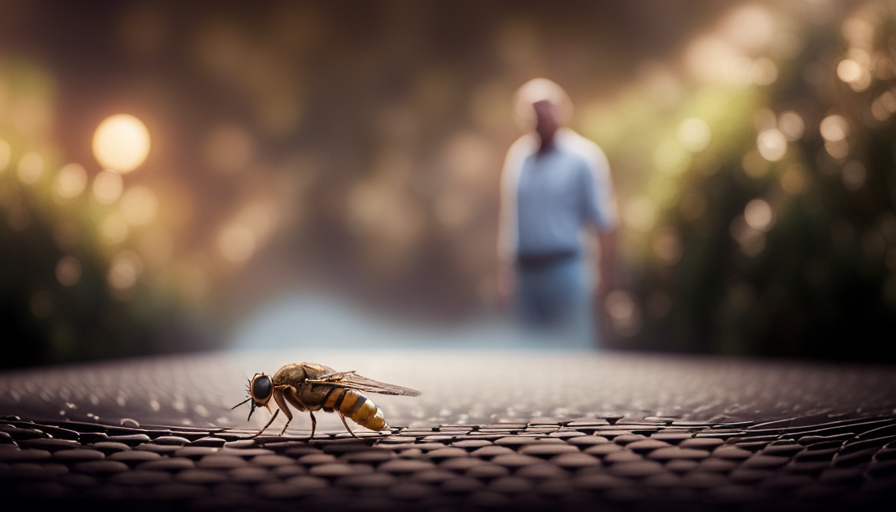
Have you ever walked into your house and been greeted by a swarm of small flies? While they may seem harmless at first, they can quickly become a nuisance.
Picture this: you enter your home, and as you make your way through the rooms, you notice these small flies buzzing around your face, landing on your food, and multiplying seemingly overnight. It’s enough to make anyone feel frustrated and disgusted.
But fear not, for I am here to shed some light on the mystery of these little pests. In this article, we will delve into the world of small flies and explore their types, breeding habits, and how to locate their breeding sources. We will also discuss preventive measures, homemade traps, and remedies you can try.
So, let’s dive in and discover what these little tiny flies in your house are all about.
Key Takeaways
- Small flies in the house are usually found near sources of food or moisture.
- Identifying and eliminating breeding sources is crucial for controlling small fly infestations.
- Regularly checking for standing water, reducing humidity, and cleaning up spills and food debris can help prevent fly infestations.
- Using natural fly repellents, regular cleaning routines, and properly sealing entry points can reduce the likelihood of attracting flies.
Identify the Types of Small Flies
These little tiny flies in my house can be identified by their distinct characteristics. Common signs of a small fly infestation include the presence of small flies buzzing around the house, especially near sources of food or moisture.
These flies are usually small, measuring only a few millimeters in length, and are commonly found near garbage cans, sinks, or drains. They have a short lifespan of only a few weeks, but their rapid reproduction can quickly lead to a large infestation if not addressed promptly.
Besides being a nuisance, small flies in the house can pose potential risks and health hazards. They’re known to carry and spread bacteria, such as E. coli and Salmonella, which can contaminate food and surfaces. This can lead to foodborne illnesses and other infections. Additionally, some people may experience allergic reactions to small fly allergens, resulting in symptoms like watery eyes, sneezing, and respiratory issues.
To understand their breeding habits, it’s essential to investigate the areas where these flies are commonly found, such as drains, garbage cans, or moist areas. By identifying their breeding grounds, it becomes easier to eliminate their presence and prevent future infestations.
Understand their Breeding Habits
Understanding their breeding habits can help you tackle the persistent presence of these minuscule pests. Small flies, such as fruit flies and drain flies, have distinct life cycles that contribute to their population growth. By understanding these cycles, you can implement effective strategies to control their population.
-
Fruit flies: These tiny insects lay their eggs on fermenting fruits and vegetables. The eggs hatch into larvae within 24-48 hours, and the larvae feed on the decaying matter for about a week. After pupating for another week, adult fruit flies emerge and the cycle continues.
-
Drain flies: These flies breed in moist areas, such as drains, sewage pipes, or standing water. Their eggs are laid in gelatinous masses, which adhere to surfaces. The larvae, also known as ‘wigglers,’ feed on organic matter in the breeding site. They pupate for about a week before emerging as adults.
Understanding their life cycle allows you to target their breeding sources effectively. By locating and eliminating these breeding sources, you can significantly reduce their population.
In the next section, we will explore how to locate the breeding sources and eradicate them completely.
Locate the Breeding Sources
To effectively tackle the persistent presence of these pesky insects, you need to locate where they’re breeding. Identifying the breeding sources is crucial in order to eliminate them and prevent future infestations.
One effective method is to use insecticides specifically designed to target the breeding sources of these tiny flies. These insecticides contain ingredients that disrupt the life cycle of the flies, preventing them from reproducing and eventually eliminating the population.
It’s also important to consider the impact of climate and weather on fly infestations. Flies thrive in warm and humid environments, making it essential to control the moisture levels in your house. Regularly check for any areas with standing water, such as leaky pipes or clogged drains, as these can serve as breeding grounds for flies. Additionally, ensure proper ventilation and reduce humidity levels in your home by using dehumidifiers or fans.
By effectively targeting the breeding sources and considering the impact of climate and weather, you can significantly reduce the presence of these tiny flies in your house. Taking preventive measures, which we’ll discuss in the next section, will help to ensure a fly-free environment.
Take Preventive Measures
To prevent the presence of these tiny flies in my house, I should take some preventive measures. Firstly, I need to clean up spills and food debris immediately to eliminate potential breeding sources.
Secondly, I should regularly clean and maintain drains to ensure they’re free from organic matter that could attract these flies.
Lastly, I need to avoid overwatering my houseplants, as the excess moisture can create an ideal breeding environment for these pests.
Additionally, it’s important to seal cracks and crevices and properly dispose of garbage to minimize their entry and attraction to my home.
Clean up spills and food debris
Clean up spills and food debris to keep those little tiny flies out of your house, as studies have shown that a single spilled sugary drink can attract up to 500 flies. To effectively prevent fly infestations, follow these cleaning tips:
- Wipe up spills immediately to eliminate any food sources.
- Store food in airtight containers to deprive flies of easy access.
- Regularly sweep and vacuum floors to remove any food crumbs.
- Dispose of garbage promptly and keep trash cans tightly sealed.
Additionally, you can use natural fly repellents like essential oils or vinegar solutions to deter flies from entering your home. By incorporating these preventive measures into your cleaning routine, you can significantly reduce the likelihood of attracting those pesky little flies.
It’s crucial to regularly clean and maintain drains as well, as they can become breeding grounds for flies.
Regularly clean and maintain drains
After taking care of spills and food debris, it’s important to shift our attention to another potential breeding ground for those pesky flies – the drains. Regularly cleaning and maintaining drains is crucial in preventing fly infestations in our homes.
Flies are attracted to the organic matter that accumulates in our drains, providing them with a perfect environment to lay their eggs. To combat this issue, there are a few drain cleaning tips to follow.
Firstly, pour boiling water down the drain to flush out any debris. Then, use a mixture of baking soda and vinegar to break down grease and eliminate odors. Finally, a drain brush can be used to physically remove any remaining buildup.
By incorporating these tips into our cleaning routine, we can effectively reduce the likelihood of fly infestations in our homes.
Moving forward, let’s explore how to avoid overwatering houseplants.
Avoid overwatering houseplants
Carefully monitoring the watering schedule of our beloved houseplants is crucial to ensure their health and prevent any unnecessary damage. Here are four important points to consider when it comes to watering your houseplants:
-
Importance of using well-draining soil for houseplants: Using well-draining soil allows excess water to escape, preventing waterlogging and root rot.
-
Avoid overwatering: Overwatering is a common mistake that can lead to root rot, fungus gnats, and other pests. Only water when the top inch of soil is dry.
-
Water thoroughly but infrequently: When watering, make sure to thoroughly moisten the soil, but allow it to dry out between waterings. This promotes healthy root growth.
-
Use the right watering technique: Instead of watering from the top, consider bottom watering by placing the plant in a tray of water and allowing it to soak up moisture.
By following these guidelines, you can maintain healthy houseplants and minimize the risk of attracting pests. Speaking of pests, let’s now discuss how to seal cracks and crevices to prevent their entry into our homes.
Seal cracks and crevices
To keep unwelcome critters at bay, it’s essential to seal cracks and crevices like a fortress protecting its treasures. These tiny flies may find their way into your house through small openings in walls, windows, or doors. By sealing these entry points, you can create a barrier that prevents their intrusion.
Start by inspecting your home for any visible cracks or gaps and use caulk or weatherstripping to seal them. Pay special attention to areas where pipes or wiring enter your home, as these are common entry points for pests. Additionally, ensure that your windows and doors are properly sealed with weatherproofing materials.
By eliminating these potential entryways, you can significantly reduce the chances of these pesky flies infiltrating your living space.
Now, let’s move on to the next step of properly disposing of garbage.
Properly dispose of garbage
To effectively combat the issue of tiny flies in your home, it’s crucial to address the proper disposal of garbage. These pesky insects are attracted to decaying organic matter, making your garbage an ideal breeding ground for them. To prevent their infestation, follow these steps:
-
Ensure that your garbage bins have tight-fitting lids to prevent flies from accessing the contents.
-
Regularly empty and clean your garbage bins to eliminate any potential food sources for the flies.
-
Consider using garbage bags that are specifically designed to repel flies and other pests.
-
If possible, keep your garbage bins away from entrances to your home to minimize the chances of flies finding their way inside.
By properly disposing of your garbage, you can significantly reduce the presence of these flies in your home.
In the subsequent section, we’ll explore the use of homemade traps and remedies to further tackle this issue.
Use Homemade Traps and Remedies
Ah, nothing ruins a cozy evening at home like those pesky little flies buzzing around! But fear not, because there are homemade traps and remedies that can help you show those tiny pests who’s boss. When it comes to dealing with these annoying flies, homemade fly repellents and natural fly control methods can be effective and environmentally friendly alternatives to chemical-based solutions.
To tackle the fly problem, you can create homemade fly traps using common household items. One simple trap involves mixing apple cider vinegar with a few drops of dish soap in a bowl. The vinegar attracts the flies, while the soap breaks the surface tension of the liquid, causing the flies to sink and drown. Another option is a fruit trap, where you can cut up a piece of ripe fruit and place it in a jar with a funnel placed on top. The flies will be attracted to the fruit and will have difficulty finding their way out of the jar.
Additionally, there are natural remedies that can help repel flies from your home. Essential oils like eucalyptus, peppermint, and lavender can be mixed with water and sprayed around the house to deter flies. Citronella candles can also be effective in keeping flies at bay, especially when used in outdoor areas.
By utilizing these homemade traps and remedies, you can significantly reduce the fly population in your house. However, if the infestation persists or becomes unmanageable, it may be necessary to seek professional help. Remember, it’s important to take action against these flies to ensure a comfortable and fly-free living space.
Seek Professional Help if Needed
If those bothersome pests persist and become an overwhelming swarm, don’t hesitate to call in the professionals, like a skilled exterminator who can swoop in like a superhero and rid your home of these winged intruders.
While DIY methods can be effective in controlling small flies in your house, there are some common mistakes to avoid when trying to eliminate them on your own.
One common mistake is not properly identifying the type of fly infestation you’re dealing with. Different species of flies require different treatment approaches. It’s important to accurately identify the flies to determine the most effective method of control.
Additionally, some DIY methods may only provide temporary relief, and the infestation can quickly rebound if not properly addressed.
Another mistake to avoid is not addressing the root cause of the infestation. Small flies are often attracted to moist and decaying organic matter, such as rotting fruits, vegetables, or damp areas in your home. Simply eliminating adult flies without eliminating their breeding sites will not solve the problem in the long term. It’s crucial to identify and eliminate these breeding sources to prevent future infestations.
Lastly, using ineffective or harmful insecticides can be a mistake. It’s important to choose insecticides specifically formulated for small flies and follow the instructions carefully. Avoid using excessive amounts of chemicals, as it can pose health risks to humans and pets.
While DIY methods can be useful in controlling small flies in your home, it’s important to avoid common mistakes and seek professional help if needed. Professional exterminators have the knowledge and experience to accurately identify the fly species, address the root cause of the infestation, and use effective and safe control methods. So, if those tiny flies become too much to handle, don’t hesitate to call in the experts.
Frequently Asked Questions
How do I know if the small flies in my house are harmful or dangerous?
To determine if the small flies in your house are harmful or dangerous, look for signs of infestation and potential health risks. Prevent infestation by keeping your house clean and dry. For extermination, consider using methods like traps, insecticides, or professional pest control services.
Can small flies in my house transmit diseases?
Small flies in my house can indeed carry diseases and pose a health risk. These tiny insects may transmit bacteria and viruses through contact with contaminated surfaces or by biting humans. It’s important to take measures to eliminate them.
Are small flies attracted to certain types of food or materials?
Small flies are attracted to common food sources such as fruits, vegetables, and decaying organic matter. To prevent infestation, it is crucial to maintain cleanliness, store food properly, and eliminate any potential breeding sites.
How long does it take for small flies to breed and multiply in my house?
The breeding habits and life cycle of small flies in my house vary depending on the species. Some can multiply rapidly, laying eggs every few days and completing their life cycle in as little as one week.
What are some common mistakes people make when trying to get rid of small flies in their homes?
Common mistakes people make when trying to rid their homes of small flies: believing they are harmless, neglecting proper sanitation, and relying solely on chemical sprays. Effective natural remedies include vinegar traps and regular disposal of organic waste.
Conclusion
In conclusion, these little tiny flies in my house are truly fascinating creatures. Despite their annoying presence, they serve as a reminder of the intricate web of life that surrounds us.
From the fruit flies that breed in the depths of our trash cans to the fungus gnats that thrive in our potted plants, every nook and cranny of our homes becomes a haven for these resilient insects.
So, next time you spot one buzzing around, take a moment to appreciate the irony of these minuscule beings disrupting our otherwise pristine abodes.
Hi, I’m Emma. I’m the Editor in Chief of Tiny House 43, a blog all about tiny houses. While tree houses are often associated with childhood, they can be the perfect adult retreat. They offer a cozy space to relax and unwind, surrounded by nature. And since they’re typically built on stilts or raised platforms, they offer stunning views that traditional homes simply can’t match. If you’re looking for a unique and romantic getaway, a tree house tiny house might just be the perfect option.
-
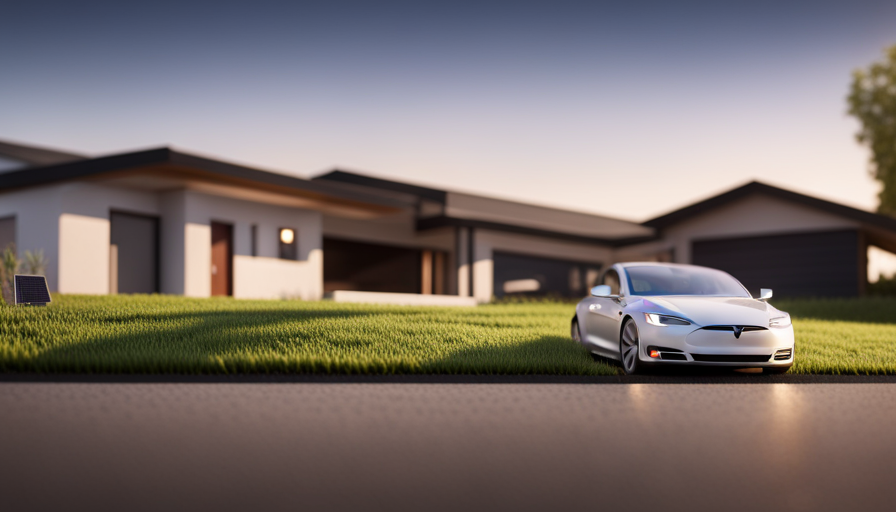
 Beginners Guides8 months ago
Beginners Guides8 months agoHow To Buy A Tesla Tiny House
-
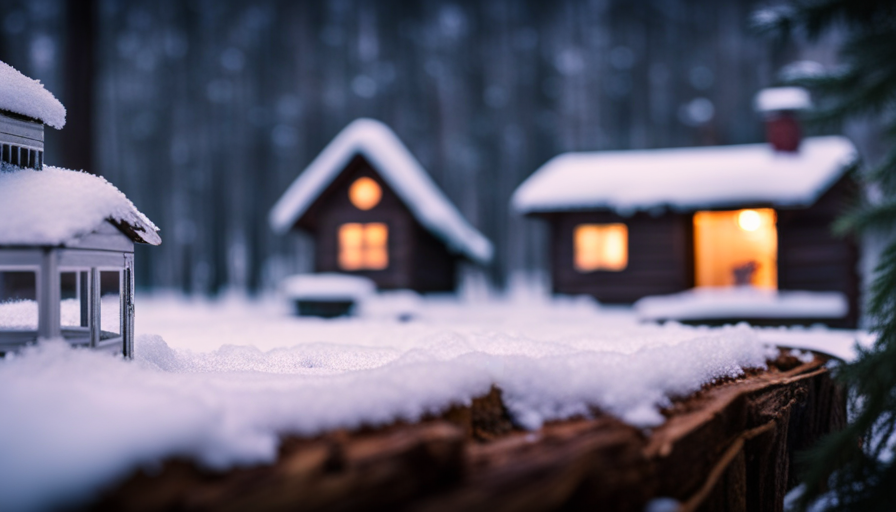
 Energy Efficiency6 months ago
Energy Efficiency6 months agoBest Tiny Homes For Cold Climates
-
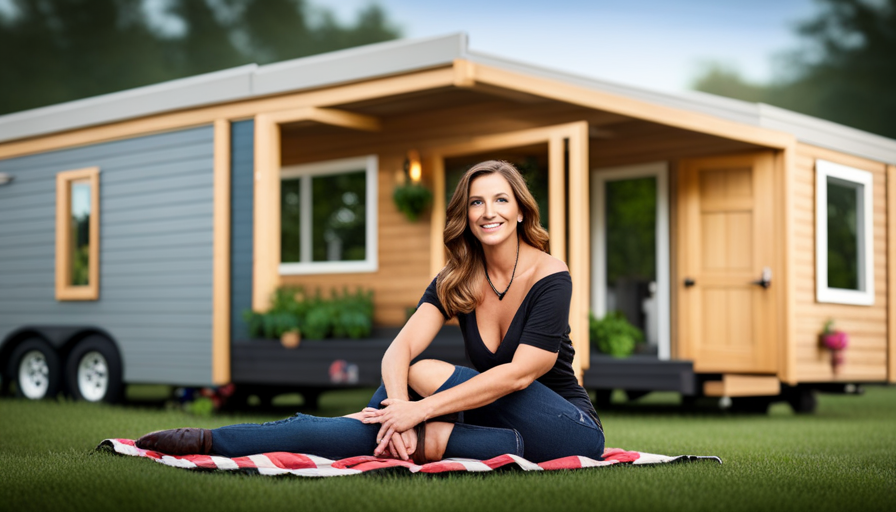
 Beginners Guides8 months ago
Beginners Guides8 months agoTiny House Nation Where Are They Now Stephanie
-
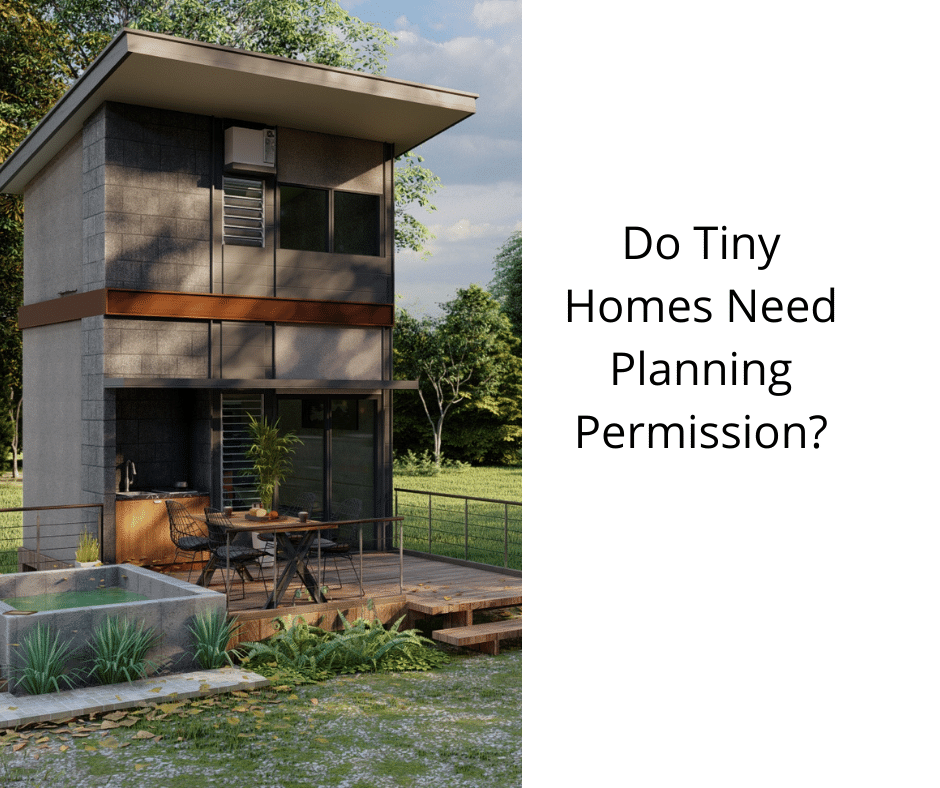
 Tiny House Resources (e.g., legalities, cost, insurance, FAQs)6 months ago
Tiny House Resources (e.g., legalities, cost, insurance, FAQs)6 months agoDo Tiny Homes Need Planning Permission?
-
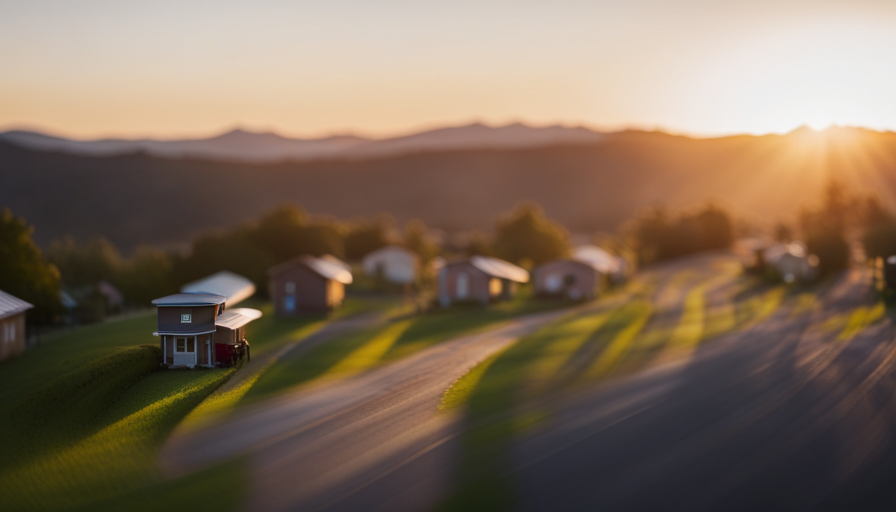
 Beginners Guides5 months ago
Beginners Guides5 months agoFrom The Show Tiny House Nation How Many Keep Their Tiny House?
-
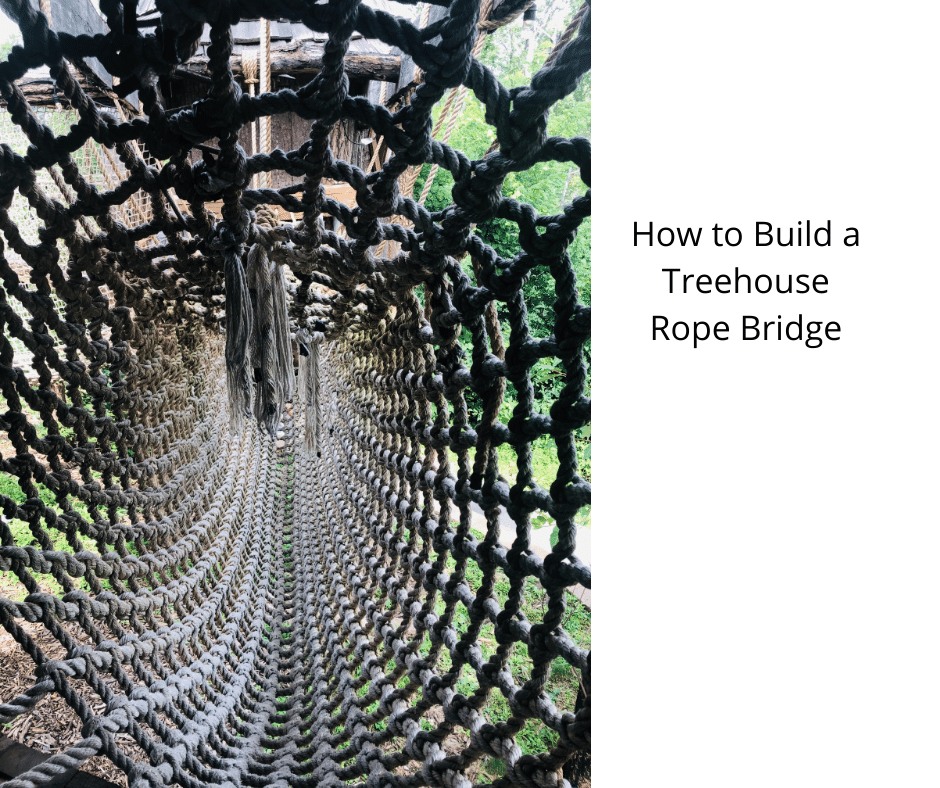
 Beginners Guides7 months ago
Beginners Guides7 months agoHow to Build a Treehouse Rope Bridge
-
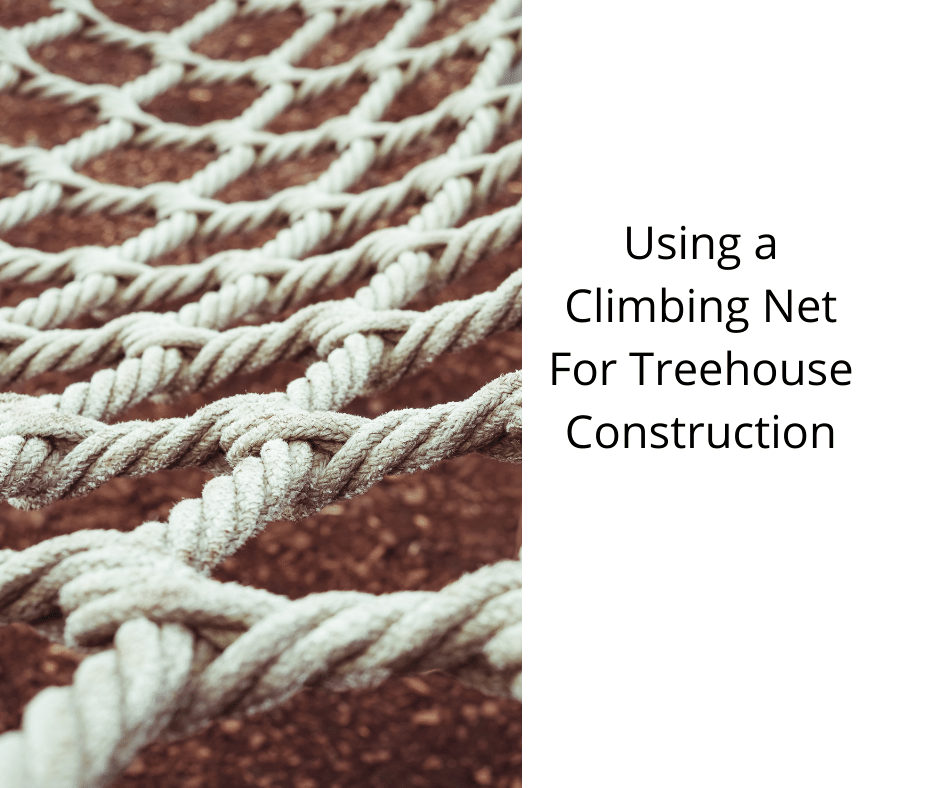
 Beginners Guides7 months ago
Beginners Guides7 months agoUsing a Climbing Net For Treehouse Construction
-
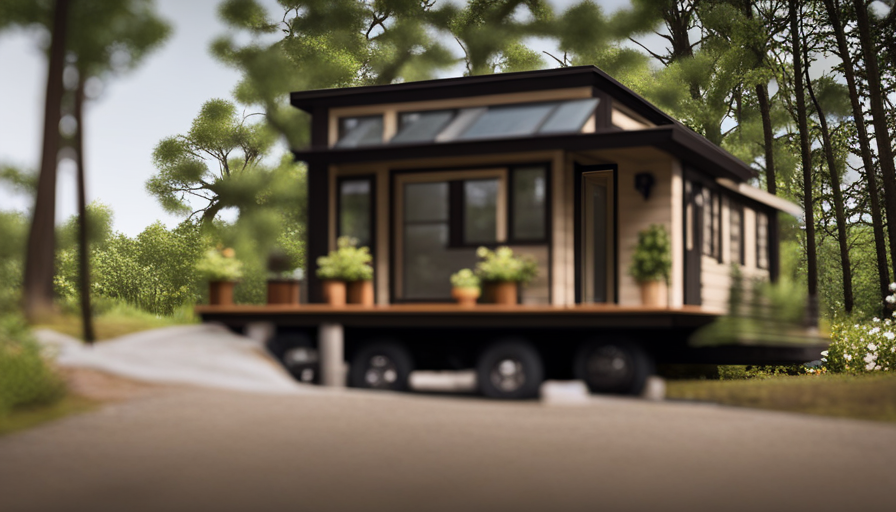
 Beginners Guides8 months ago
Beginners Guides8 months agoWhere To Buy Tesla Tiny House





